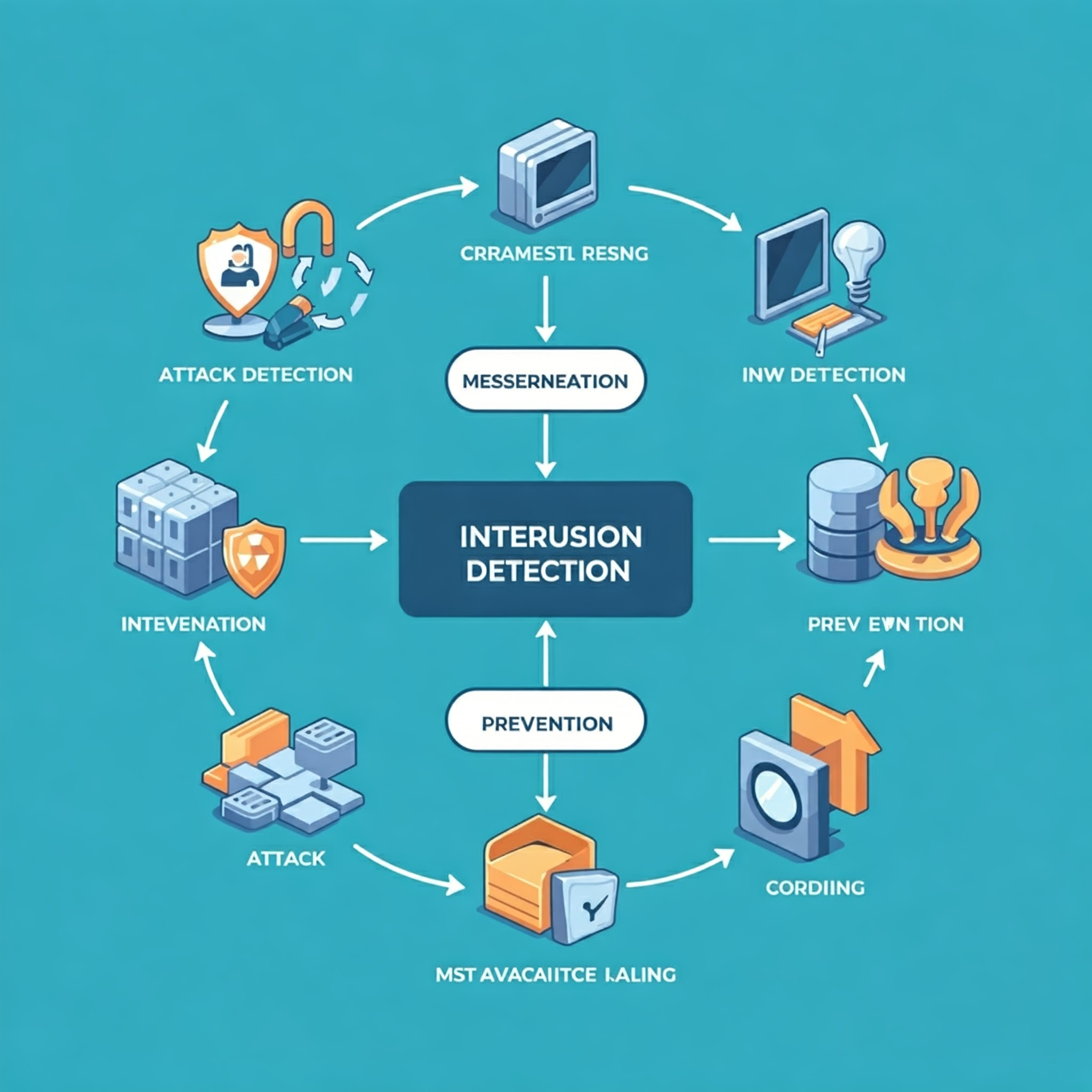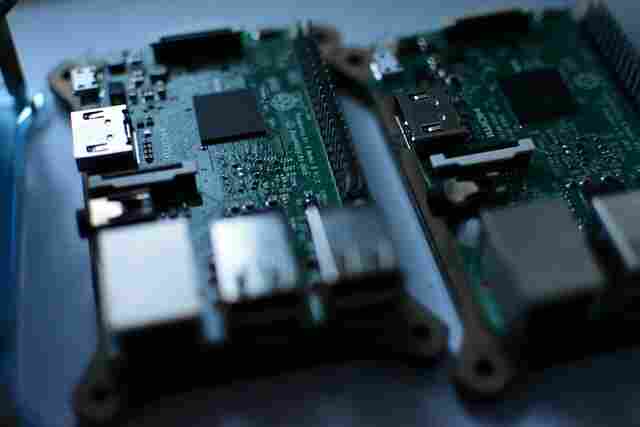1. Home Intrusion Detection
The Internet of Things (IoT) is an ever-growing network of smart objects. It refers to physical objects capable of exchanging information with other physical objects. Nowadays, safety and security have become basic necessities for metropolitan society.
This proposes a security system for an IoT environment that prevents intrusion in homes, banks, airports, offices, universities, or any location with a security system. The primary objective of our project is to reduce human work by designing and implementing a security system, a system that offers controllability through a handheld mobile phone and PC utilizing IoT.
To detect malicious activity or policy violations, we use an Intrusion Detection System (IDS), which detects any intrusion or violation and typically reports to the administrator. This system includes an Anomaly-based technique for intrusion detection and signature analysis using the Haar algorithm to differentiate between legitimate persons and intruders, thus raising accuracy in authorizing the legitimate person and providing access to private/personal zones, thereby reducing the risk of sending false alerts/alarms.
Automation is a primary key factor of security. We use Raspberry Pi3 and relays to control any electric appliances that can be implemented in the home, office, bank, etc. The administrator can monitor the place through an application with live feedback and control an automated environment.

Infrastructure
The system observes a deviation from the normal behavior of the system or the users. The system later compares it with the current activity. When a deviation is observed, an alarm/GSM-based message is generated. It detects the false alarm/message rate of the system, not because the entire scope of the behavior of an information system may be covered during the initial phase. The system includes a PIR module that constantly monitors the home or workspace. When the PIR module detects an intruder, it sends a signal to the microcontroller, and the controller is connected to a module and also to an alarm system.
The system transmits an alert signal to the user’s mobile phone. The system also employs a thumbprint reader that controls the opening and closing of a safety locker door. Thus, the system uses a Wi-Fi module and controller to control the security system from the user’s mobile phone. Utilizing any device with a potential internet connection, the system will be augmented with a parameter monitoring security subsystem. This will be supplemented to get information about home monitoring and fingerprint protection, which can give false alarms to nearby residents and the owner of the house in case of theft.
Working
We will be using different IDS (Intrusion Detection System) techniques:
- Anomaly Detection: This technique detects abnormal behavior in the system using a PIR sensor. The normal usage pattern is the base, and alerts are generated when usage deviates from normal behavior. Then a camera is activated. When the camera is activated, the detected person will be examined, and the encryption/decryption process will be applied to the user exceeding authorization by face recognition technique (image processing).
- Signature Analysis: This technique compares the examined data with the specifically predefined data (also known as signatures) and provides authorization, thus enabling accuracy in the intrusion detection system and lowering the false alarm/message rate. An infrared sensor is used to differentiate between PIR and other obstacles.
System Specification
To prevent intruders from entering the home and provide access to only legitimate persons, we implement different IDS techniques, i.e., Anomaly-based and Signature analysis using different sensors and wireless cameras for the detection of intruders. If any intruder is detected, the detected intruder’s image is examined with the previously stored database, and a notification is sent to the owner. If the person is legitimate, access is provided to the home. This enables the owner to monitor his/her home with live feedback through an application and provides home automation through the application.

2. Air Pollution Monitoring
The level of pollution has increased with time due to factors like the increase in population, increased vehicle use, industrialization, and urbanization, resulting in harmful effects on human well-being by directly affecting the health of the population exposed to it.
We are going to study how to make an IoT-based Air Pollution Monitoring System in which we will monitor the air quality over a web server using the internet and will trigger an alarm when the air quality goes down beyond a certain level, meaning when there are sufficient amounts of harmful gases present in the air like CO2, smoke, alcohol, benzene, and NH3.
It will show the air quality in PPM on the LCD and as well as on the webpage so that we can monitor it very easily. We have used the MQ135 sensor, which is the best choice for monitoring air quality as it can detect most harmful gases and can measure their amount accurately.
In this IoT project, you can monitor the pollution level from anywhere using your computer or mobile. We can install this system anywhere and can also trigger some devices when pollution goes beyond some level; we can switch on the exhaust fan or send an alert SMS/mail to the user.
Basic Study
Air pollution is the biggest problem of every nation, whether it is developed or developing. Health problems have been growing at a faster rate, especially in urban areas of developing countries. Industrialization and the growing number of vehicles lead to the release of a lot of gaseous pollutants. Harmful effects of pollution include mild allergic reactions such as irritation of the throat, eyes, and nose, as well as some serious problems like bronchitis, heart diseases, pneumonia, lung and aggravated asthma.
Various kinds of anthropogenic emissions, named primary pollutants, are pumped into the atmosphere that undergo chemical reactions and further lead to the formation of new pollutants normally called secondary pollutants.
Almost every citizen spends 90% of their time indoors. Outdoor air quality of the cities of developed countries has improved considerably in recent decades, while indoor air quality has degraded during this same period because of many factors like reduced ventilation, energy conservation, and the introduction of new sources and new materials that cause indoor pollution.
The design of buildings for lower power consumption results in a decrease in ventilation, which further decreases the quality of air inside the building. This increases the need for Indoor Air Quality (IAQ) monitoring.
System Design
This air pollution monitoring is based on the diagram as shown below. The data of air recognized by the MQ135 gas sensor can sense NH3, NOx, alcohol, benzene, smoke, and CO2. It is a dynamic gas sensor for our Air Monitoring system. When we connect it to Arduino, it will sense all gases and give the pollution level in PPM (Parts Per Million). The MQ135 gas sensor will give the output in the form of voltage levels, and we have to convert it into PPM. So, for converting the output in PPM, we have used a library for the MQ135 gas sensor.
| Gas Detected | Safe Level (PPM) | Harmful Level (PPM) | Effects |
|---|---|---|---|
| CO2 | <1000 | >1000 | Headaches, sleepiness, stagnant air |
| NH3 | <200 | >200 | Eye irritation, respiratory issues |
| Benzene | <5 | >5 | Drowsiness, dizziness |
| Smoke | <10 | >10 | Respiratory problems |
Monitoring and Alerts
The sensor was giving us a value of 90 when there was no gas near it, and the air quality safe level is 350 PPM; it should not exceed 1000 PPM. When it exceeds the limit of 1000 PPM, it will cause headaches, sleepiness, and stagnant, stuffy air. If it exceeds 2000 PPM, it will cause increased heart rate and many different diseases. When the value is less than 1000 PPM, the LCD and webpage will display “Fresh Air.” When the value increases from 1000 PPM, the buzzer will start beeping, and the LCD and webpage will display “Poor Air, Open Windows.” When it increases to 2000 PPM, the buzzer will keep beeping, and the LCD and webpage will display “Danger! Move to fresh Air.”
(a) Arduino Uno R3 Microcontroller
It is the most flexible hardware platform used based on ATmega328P which can be programmed according to the function where it is to be used. It has 6 analog inputs, 14 digital input/output pins (6 pins of these can be used as PWM outputs), a USB connection, a 16 MHZ quartz crystal, SPI, serial interface, a reset button, a power jack, and an ICSP header.
The Arduino microcontroller is not only for technical audiences but is intended for designers and artists as well because of its focus on usability based on its design which helps to achieve the intended goal. It is the primary component of the framework. It is an open-source microcontroller device with an easily accessible software/hardware platform and is compatible with many sensors available. Everything needed for its working is present on the board; we only require a USB cable to directly connect it to the computer or give power using a battery source or AC to DC adapter to get started. Also, it is not expensive and can be assessed with free authoring software, i.e., IDE (Integrated Development Environment). With the availability of a large number of source codes over the internet, the programming of Arduino becomes easy.
The online growing community backing Arduino consists of programmers like us who share their examples with others to make it a more reliable platform. It is mainly used in RF and IR circuits.
These decoders are mainly used for remote control applications like burglar alarms, car door alarms, security systems, etc. The chosen pair of encoder and decoder for communication should have the same number of addresses and data bits.
(b) MQ135 Gas Sensor
The sensitive material used in the MQ135 gas sensor is SnO2. The conductivity of this material is lower in clean air. The sensor conductivity increases with the increasing concentration of target pollution gas. MQ135 can monitor different kinds of toxic gases such as sulfide, ammonia gas, benzene series steam, and CO2. The detection range is 10-10,000 ppm with a voltage rate of about 5.0V ± 0.1V AC or DC. The important features are a long life span, low cost, simple driver circuit, and good sensitivity to toxic gases. MQ135 gas sensor is widely used in industrial gas alarms, portable gas detectors, and domestic gas alarms.
MQ135 is used in this framework for monitoring CO2 in the air. The amount of CO2 present in the atmosphere is 400.7 ppm according to which the sensor is calibrated.
(c) ESP8266 Wifi Module
The ESP8266 WiFi Module is a self-contained SOC with an integrated IP protocol stack that can give any microcontroller access to your WiFi network. The WiFi module is capable of either hosting an application or offloading all Wi-Fi networking functions from another application processor. Every ESP8266 module comes pre-programmed with an AT command set firmware, meaning we can simply connect it to the Arduino device. The ESP8266 module is an extremely cost-effective board.
This module is powerful for on-board processing and storage capability that allows it to be integrated with the sensors and other application-specific devices through its GPIOs with minimal development upfront and minimal loading during runtime. It has a high degree of on-chip integration that allows for minimal external circuitry, including the front-end module, and is designed to occupy minimal PCB area.
The WiFi module supports APSD for VoIP applications and Bluetooth co-existence interfaces, contains a self-calibrated RF allowing it to work under all operating conditions, and needs no external RF parts. There is an almost limitless fountain of information available for the WiFi module, all of which has been provided by amazing community support.
(d) LCD
LCD (Liquid Crystal Display) is an electronic display module. A 16 x 2 LCD is a very basic module and is very commonly used in different types of devices and circuits. These modules are preferred over seven-segment and other multi-segment LEDs.
A 16 x 2 LCD means it displays 16 characters per line and there are 2 lines. By this LCD, each character is displayed in a 5 x 7-pixel matrix. This LCD contains two registers, which are Command and Data. The command register stores the command instructions given to the LCD. A command is an instruction given to LCD to do a predefined task like initializing it, clearing its screen, setting the cursor position, controlling the display, etc.
The data register stores the data to be displayed on the LCD. The data is in the form of the ASCII value of the character to be displayed on the LCD.
System Proposal
The system to monitor the air of the environment using an Arduino microcontroller and IoT technology is proposed to improve the quality of air. The use of IoT technology enhances the process of monitoring various aspects of the environment such as the air quality monitoring issue proposed. Here, the use of the MQ135 gas sensor detects different types of dangerous gases, and Arduino is the heart of this project, controlling the entire process. The WiFi module connects the whole process to the internet, and the LCD is used for the visual output.

